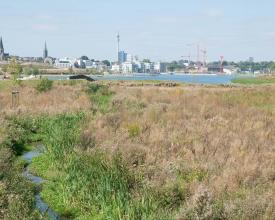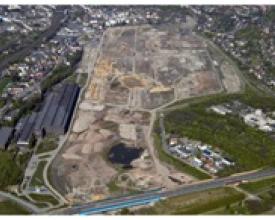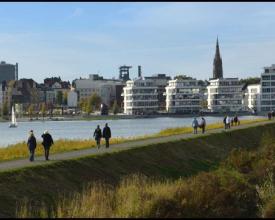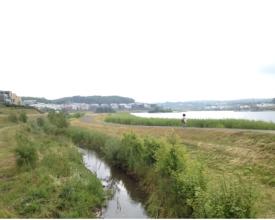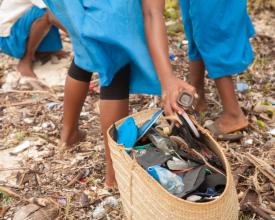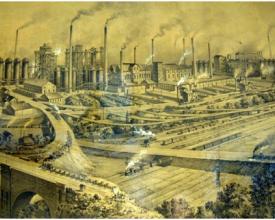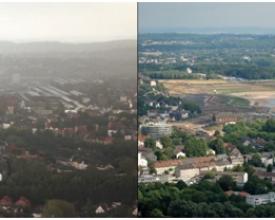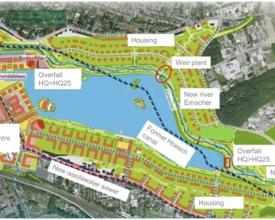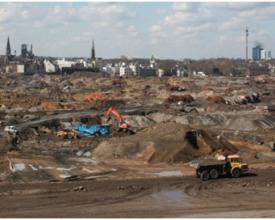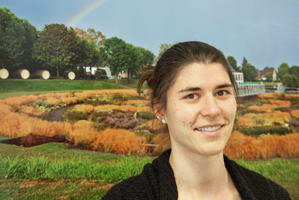
Flood Management and Ecological Improvement - The Creation of Lake Phoenix
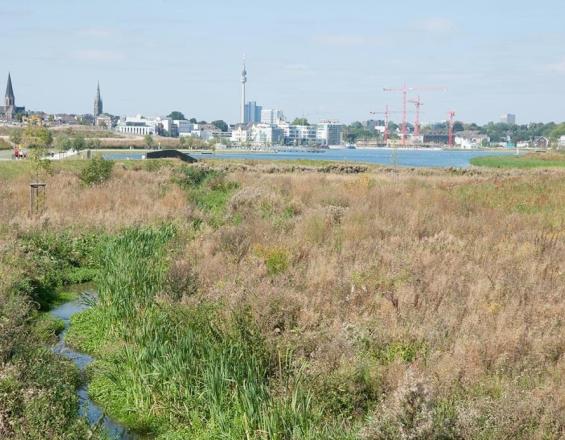
Context
Challenges addressed
Beneficiaries
Location
Process
Summary of the process
Building Blocks
Synergistically addressing diverse problems and goals
Enabling factors
Lesson learned
Securing sufficient funds for a multi-purpose EbA solution
Enabling factors
Lesson learned
Setting the framework for successful restoration activities
Enabling factors
Lesson learned
Impacts
Sustainable Development Goals
Story
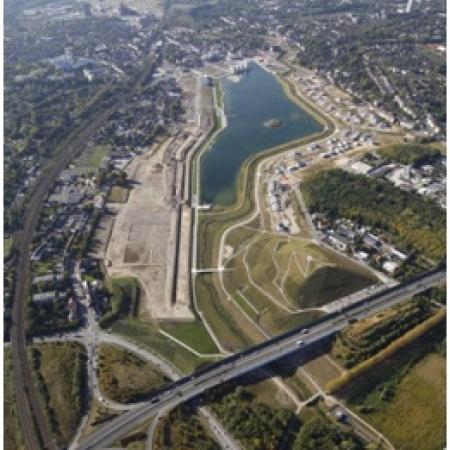
Until 2001, a steel production company was located where Lake Phoenix is now situated, with the Emscher stream flowing underneath. In the 1990s, the steel works were coming to an end and a brainstorming took place on how to develop the area. In 2001, the factory was shut down and deconstructed. The city of Dortmund bought the area, which was owned until then by the mining company. In discussions about future uses, the idea to transform it into a lake was proposed - and initially only laughed at! However, a few committed individuals pushed for this idea and were able to propel the project and inspire a feasibility study and public discussions. The idea of a multipurpose lake surrounded by new properties ultimately turned out to be feasible: It could serve as a biodiversity hotspot, a flood retention basin, and a place for local recreation, while making the city more attractive for both people and businesses. This combination of various problems (flood risks; abandoned brownfield site) and goals (flood retention; Emscher conversion; attractiveness of the city, etc.) served multiple interests and was a crucial success factor. The PHOENIX-See Entwicklungsgesellschaft was founded to manage this large-scale project, while the local water board was involved in all topics related to water management. In this coalition, various parties with different problem perceptions, solutions and resources worked together, with a clear division of tasks, responsibilities and expertise. From the governmental side, a large number of agencies were involved in the process. Public participation was realized through formal and informal meetings and discussions. Further feasibility and assessment studies were conducted to improve the solution and convince decision-makers that the risks were acceptable. After a long planning phase, digging operations started in 2006. In 2010 the lake was flooded and officially opened in 2011. The construction of houses along the lake also began in this period. In 2013, the Entwicklungsgesellschaft “delivered” the lake back to the city of Dortmund. Given that the project served various goals, funding could be organised from several parties and domains, e.g. the Emschergenossenschaft provided the amount of money that was already budgeted for the construction of a flood retention basin. The marketing of the real estate developments was a further financial aspect considered from the start in order to make the project partly self-supporting.

